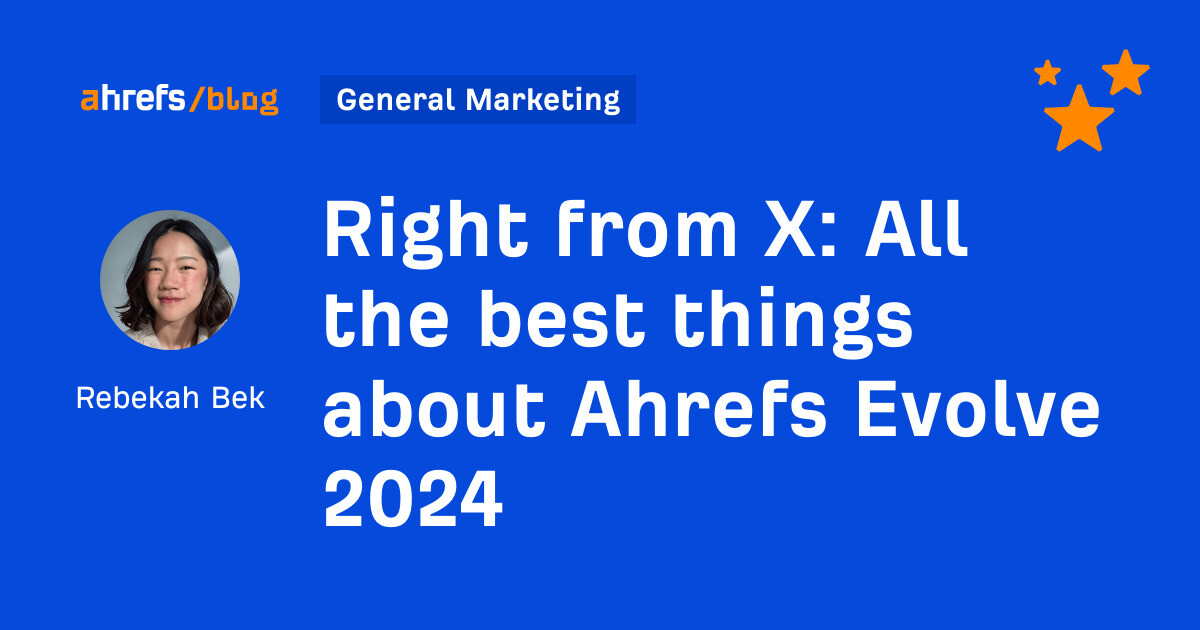SEO
7 Ways To Improve Local SEO & Attract New Business

There is a big difference between the way standard organic SEO works and the way we should approach Local SEO.
Not only is searcher intent likely different, the algorithms Google uses to show the map pack differs from the main organic algorithms.
In this article, I’ll be taking you through the ways you can win new customers and improve your visibility through local SEO.
Top Ways To Improve Your Local SEO
1. Keep An Eye On Your Competitors’ Google Business Profile Q&As
Google Business Profile (GBP) has a great function that can do wonders for growing new business – the questions and answers feature.
If you use it well for your own organization, it can help convert customers who are otherwise on the fence.
But don’t stop there. Spend time researching your competitors’ Q&As, too. See what your potential customers are asking others in your industry.
How GBP Q&A Works
On your Google Business Profile, you may notice an “Ask a Question” button. Once clicked, users are taken through to a screen that allows them to submit a question.
This next bit is key. The question does not get submitted to the owner of the profile. It gets submitted to the profile. That means it is visible to anyone who sees a Google Business Profile listing.
Once a question has been posted to your competitors’ Google Business Profile listing, you will be able to see it.
And once the question is answered, that information – and the engagement – is there for all in the future to see.
How Does This Help Build New Business?
These questions are a great way to encourage new business from local searchers. Questions are likely to be asked by people who have never visited that business before but are in your target market.
They are already engaging with the brand but need a bit more information before they commit to a visit.
For Your Own Listing
On your own GBP, you can use this opportunity to converse with a potential local consumer who is far down the conversion funnel.
If they are at the stage where they have found you and are considering you enough to ask some questions, a thoughtful response may be all it takes to see them walk through your doors.
On A Competitor’s Listing
Look at what questions your competitors’ customers and potential customers are asking. Use this to better fill out the information on your own profile and website.
If you are noticing a lot of questions being asked about the availability of gluten-free pizza from other pizza restaurants in your area, for example, you want to make sure you highlight your gluten-free products on your site and listing.
This type of research can keep you one step ahead of local competitors, especially if the questions they have been asked are slightly negative in tone.
Consider this question: “Do you still play loud music?”
If a potential restaurant-goer sees that question asked of another business, it immediately makes them consider the environment they will be eating their meal in.
It may make them wonder if they will really be able to enjoy the catch-up with their friends over a meal as they have planned.
Answer the questions being asked of your competitors on your own website and GBP before anyone asks. State in your description that customers will enjoy a meal accompanied by relaxing, ambient music.
This can put you at a significant advantage over your competitors for winning new business in your geography.
When you proactively answer a potential customer’s question before they even have to ask it, you demonstrate that you understand their needs and wants.
2. Tweak A Google Product Listing To Get More Exposure
Google allows businesses with GBP to upload details of the products they offer. This can be viewed by potential customers on both mobile and desktop search results.
The listings appear in the GBP in a carousel format on Maps and in both a carousel and under the Products tab in Search.
Both formats allow users to click on the product cards for more detail, to call, or visit the website.
How GBP Product Listings Work
Uploading your products to a Google Business Profile has gotten simpler. Google has released a new way of doing this called “Pointy.” Pointy is a device that is plugged in between the barcode scanner and the point-of-sale device. As products are scanned in, Pointy adds them to Google.
This is a quick way of uploading your product inventory to your Google Business Profile. There are restrictions around this, however, as Pointy is only available in some countries and also isn’t suitable for products without barcodes (bunches of flowers, for instance).
It is still possible to upload products manually. Simply sign in to your profile and click Edit Profile > Products > Add Product.
How Does This Help Build New Business?
You may be looking to showcase some products over others for a variety of reasons. You may have a surplus of stock in one of your locations, for example.
Bringing that stock to the forefront of that location’s GBP listing will help alert local customers to it. It will allow you to target specific products more to relevant audiences, dependent on their location.
For instance, seasonal products may be better served first. Perhaps the geographic location of your car repair shop is set for an unseasonal snow flurry. Edit your snow tire listings to bring them to the beginning of the carousel.
This could enhance the visibility of your product at just the right time for a new customer in your target location to see them.
3. Use Google’s Business Messages While You Can
Google Business Profile can include functionality that allows businesses to correspond with customers straight from the SERPs.
When activated, GBP will display a Message button that users can click on to start direct messaging with the business.
How GBP Business Messages Work
This functionality has existed since 2017 in Google Business Profile and since 2018 in Google Maps. It has only recently made it onto the desktop, however.
If you are an owner of a GBP, you should see the option in your desktop dashboard to Turn on messaging under the Messages tab.

You can then set items like an initial auto-responder to be sent out when a visitor first messages you are using this service.
To make sure the service is a timely one, Google recommends you reply to all messages within 24 hours.
If you don’t, Google may deactivate the messaging service on your account. Your response times can also show in Google Search and Maps.
Google may display ‘Usually responds in a few minutes,’ ‘Usually responds in a few hours,’ ‘Usually responds in a day,’ or ‘Usually responds in a few days,’ depending on your average reply time.
How Does This Help Build New Business?
Not everyone has the time (or inclination) to call up a business they have yet to engage with. Allowing potential local customers to message you straight from your GBP is an excellent way of streamlining conversations with them.
If you respond quickly, your chances of that potential customer converting are greatly increased.
This is of particular use to local businesses that perhaps don’t use centralized call centers or messaging. It can be another touch point that shows the personalization of the business based on the location that the consumer is in.
Consider the offers, services, and tone of voice that might be most appropriate to your customers in that particular geography. This is your opportunity to highlight again how well you know your customers.
Make use of the local name for the area your business is in. Talk about the specific events and charities you support in the area.
Any additional indication that your business serves the local population specifically can help to reinforce your relevance to the potential customer who has contacted you.
Now that the functionality is available in such a wide range of places on the web, it would be a wasted opportunity not to engage with your potential customers in this way.
4. Update Your GBP With All Relevant Newly Available Attributes
Google keeps updating the features available through its Google Business Profile property. Make sure you keep your listing fully populated with the relevant attributes as they become available.
How Do New Attributes Work
Google frequently adds functionality to Google Business Profile that your business might be eligible to use. Not every new feature is available to all types of businesses, however.
Whether you can access new updates depends on what category is set as your primary in GBP.
To keep up to date with what new features are becoming available and who is eligible for them, visit Google’s GBP announcements page.
How Does This Help Build New Business?
With any new change to Google Business Profile, early adoption will put you ahead of the pack. Although these attributes will not necessarily affect your rankings in the map pack, they can make your business more attractive to prospective local customers.
For instance, attributes can include details of the business’s ownership. For example, it’s possible to include attributes like “women-owned” and “black-owned” to your Business profile.
Google also introduced the option to denote a business’s support for the LGBTQ+ community through “LGBTQ+ friendly” attributes.
A business showing that it is inclusive and supportive of minority groups can help members of those groups to feel welcomed. For some people, knowing they will be welcomed at a business can be the difference between them visiting there instead of a competitor whose support isn’t guaranteed.
 Screenshot from Google Business Profile, September 2022
Screenshot from Google Business Profile, September 20225. Join Local Marketplaces And Forums
The key to marketing your local business well is understanding what your audience is looking for. A great way of understanding your target market is by spending time where they are.
This includes online.
Make sure you register your business in local directories and forums. This is not so much for the traditional citation benefit. It’s so you can be amongst your prospective customers, hearing what they are talking about.
How Local Marketplaces & Forums Work
Online Marketplaces
Look on platforms like Facebook for marketplaces relevant to your location and products. You don’t necessarily need to be engaging with the audience to learn more about who they are and what they respond to.
For instance, if you sell locally created craft products in your store, you can get a feel for how much your audience is willing to pay for products by seeing what similar items are being sold for in your town’s Facebook Marketplace.
By watching what your local audience is saying about prices, quality, shipping, and sourcing of products, you can begin to understand more about your audience’s preferences.
Forums
If you are a local pizza restaurant, you would do well to join Reddit subreddits for your city and read the threads that talk about restaurants in your area.
What is your local audience saying about your competition? Are they sick of pizza restaurants and really want someone to bring something new to the area?
Perhaps they are enthusiastic about local independent shops and want to support them more.
How Does This Help Build New Business?
This kind of information can help you to tailor your search marketing strategy, tone of voice, and more.
Go to places where your target audience members are talking freely about your local area. Find out what they want from their local businesses.
If you are feeling brave, you can even interact with your audience on these platforms. This has to be done sensitively and authentically.
Most people don’t want to be mined for information without their consent. Be open and honest when reaching out for feedback on these sites.
The more you can watch and learn from your audience, the more likely you are to be able to offer products and services they will respond well to.
6. Don’t Neglect Bing, DuckDuckGo, And Others
Google is not the only search engine you need to be concerned with. There are others, too, that might be the first port of call for users looking for information on local businesses.
How Other Search Engines Work
You may see the vast majority of the organic traffic going to your site coming from Google. Don’t forget that you might not be tracking all of the ways customers discover you through search.
Your profile showing in the SERPs might not generate a click. As a result, it will not show up in your web analytics program.
So, unless you are measuring impressions across different search engines, you will not know that your business has been seen on the likes of Bing or DuckDuckGo.
DuckDuckGo’s maps are powered by Apple Maps. Therefore, if you want your business to appear in the DuckDuckGo local map pack, you will need to have your business set up with an Apple Maps Connect profile.
Similarly, Bing uses Bing Places to power their local map functionality. Setting up and optimizing a Google Business Profile listing will not help you with increasing organic visibility on Bing.
We are seeing an increase in the popularity of other search engines over time, and for some locations, Google is not the primary search engine used.
If you have physical stores or business locations outside of the U.S., you should look at which search engines are also popular in those regions.
Make sure you utilize the local map functionality of these other search engines.
How Does This Help Build New Business?
Yet again, being where your competitors are not will put you in good stead.
If your competitors are not appearing in the Apple Maps results in DuckDuckGo, you are going to be far more likely to win the business of local searchers using that platform.
7. Keep An Eye On Your Reputation
You may be keeping a close eye on the reviews left on sites like TripAdvisor. You even check your own Google Business Profile listing regularly.
But are you keeping on top of some of the other places in the SERPs which might be giving potential customers an outsider’s view of your business?
How Reputation Monitoring Works
Top and middle-of-the-funnel local search queries, such as [car mechanic telford], can bring back a variety of features in the SERPs.
Prominently Featured Review And Directory Sites
Take a look at this SERP result:
 Screenshot from search for [car mechanic telford], Google, September 2022
Screenshot from search for [car mechanic telford], Google, September 2022The top carousel lists large directories, social media sites, and niche directories. This gives potential customers access to information about your company – and potentially even reviews – on sites you may not even be checking.
Aside from the inaccurate data about your company that these sites may contain, what have customers, former employees, or even competitors said about you?
Given that links to these sites appear as the first feature in the Google SERPs for this query, it would stand to reason they may get a lot of visibility from your potential customers.
People Also Ask
If customers are in the process of narrowing down their choice of business, they might start searching for specific information about those businesses. That can often trigger a “People Also Ask” feature to appear.
When searching for [is (name of a mechanic) in Telford any good], the following PAA box appeared, talking specifically about that brand.
 Screenshot from Googe search, September 2022
Screenshot from Googe search, September 2022That first “People Also Ask” question is, “why is [brand] so expensive?” That does not inspire much confidence in the value for money of this particular mechanic.
Although there is not much you can do to control what questions appear in the “People Also Ask” section, it is important to try to influence the perception of those who may click on this question.
Write a page addressing this question and try to get it ranking. That way, when someone interested in your local business clicks on this question, they at least will see your response around “the quality service,” “not compromising by using cheap parts,” and “highly-skilled technicians who you pay well for their expertise.”
How Does This Help Build New Business?
It is crucial to remember that what a potential customer sees about you may not just be the information you are writing on your website or Google Business Profile listings.
It might not even be the reviews left on sites you are closely monitoring and responding to.
A potential customer will be influenced heavily by others’ opinions and experiences of your business. Local businesses tend to attract a lot of reviews because they are promoted by sites that encourage them to be left.
A negative perception of your business will likely be the difference between you winning or losing a new customer.
Always monitor the SERPs around your core lead-generating search terms. Identify where negative perceptions of your business could be formed.
Conclusion
There are many aspects of SEO that you need to consider if you want your business to do well with your local audience.
How your website appears for searches with local intent in Google Maps and the standard SERPs can make or break your business.
If you want your brick-and-mortar business to succeed online, make sure you develop a robust local SEO strategy.
More Resources:
Featured Image: Rido/Shutterstock
SEO
How Compression Can Be Used To Detect Low Quality Pages

The concept of Compressibility as a quality signal is not widely known, but SEOs should be aware of it. Search engines can use web page compressibility to identify duplicate pages, doorway pages with similar content, and pages with repetitive keywords, making it useful knowledge for SEO.
Although the following research paper demonstrates a successful use of on-page features for detecting spam, the deliberate lack of transparency by search engines makes it difficult to say with certainty if search engines are applying this or similar techniques.
What Is Compressibility?
In computing, compressibility refers to how much a file (data) can be reduced in size while retaining essential information, typically to maximize storage space or to allow more data to be transmitted over the Internet.
TL/DR Of Compression
Compression replaces repeated words and phrases with shorter references, reducing the file size by significant margins. Search engines typically compress indexed web pages to maximize storage space, reduce bandwidth, and improve retrieval speed, among other reasons.
This is a simplified explanation of how compression works:
- Identify Patterns:
A compression algorithm scans the text to find repeated words, patterns and phrases - Shorter Codes Take Up Less Space:
The codes and symbols use less storage space then the original words and phrases, which results in a smaller file size. - Shorter References Use Less Bits:
The “code” that essentially symbolizes the replaced words and phrases uses less data than the originals.
A bonus effect of using compression is that it can also be used to identify duplicate pages, doorway pages with similar content, and pages with repetitive keywords.
Research Paper About Detecting Spam
This research paper is significant because it was authored by distinguished computer scientists known for breakthroughs in AI, distributed computing, information retrieval, and other fields.
Marc Najork
One of the co-authors of the research paper is Marc Najork, a prominent research scientist who currently holds the title of Distinguished Research Scientist at Google DeepMind. He’s a co-author of the papers for TW-BERT, has contributed research for increasing the accuracy of using implicit user feedback like clicks, and worked on creating improved AI-based information retrieval (DSI++: Updating Transformer Memory with New Documents), among many other major breakthroughs in information retrieval.
Dennis Fetterly
Another of the co-authors is Dennis Fetterly, currently a software engineer at Google. He is listed as a co-inventor in a patent for a ranking algorithm that uses links, and is known for his research in distributed computing and information retrieval.
Those are just two of the distinguished researchers listed as co-authors of the 2006 Microsoft research paper about identifying spam through on-page content features. Among the several on-page content features the research paper analyzes is compressibility, which they discovered can be used as a classifier for indicating that a web page is spammy.
Detecting Spam Web Pages Through Content Analysis
Although the research paper was authored in 2006, its findings remain relevant to today.
Then, as now, people attempted to rank hundreds or thousands of location-based web pages that were essentially duplicate content aside from city, region, or state names. Then, as now, SEOs often created web pages for search engines by excessively repeating keywords within titles, meta descriptions, headings, internal anchor text, and within the content to improve rankings.
Section 4.6 of the research paper explains:
“Some search engines give higher weight to pages containing the query keywords several times. For example, for a given query term, a page that contains it ten times may be higher ranked than a page that contains it only once. To take advantage of such engines, some spam pages replicate their content several times in an attempt to rank higher.”
The research paper explains that search engines compress web pages and use the compressed version to reference the original web page. They note that excessive amounts of redundant words results in a higher level of compressibility. So they set about testing if there’s a correlation between a high level of compressibility and spam.
They write:
“Our approach in this section to locating redundant content within a page is to compress the page; to save space and disk time, search engines often compress web pages after indexing them, but before adding them to a page cache.
…We measure the redundancy of web pages by the compression ratio, the size of the uncompressed page divided by the size of the compressed page. We used GZIP …to compress pages, a fast and effective compression algorithm.”
High Compressibility Correlates To Spam
The results of the research showed that web pages with at least a compression ratio of 4.0 tended to be low quality web pages, spam. However, the highest rates of compressibility became less consistent because there were fewer data points, making it harder to interpret.
Figure 9: Prevalence of spam relative to compressibility of page.
The researchers concluded:
“70% of all sampled pages with a compression ratio of at least 4.0 were judged to be spam.”
But they also discovered that using the compression ratio by itself still resulted in false positives, where non-spam pages were incorrectly identified as spam:
“The compression ratio heuristic described in Section 4.6 fared best, correctly identifying 660 (27.9%) of the spam pages in our collection, while misidentifying 2, 068 (12.0%) of all judged pages.
Using all of the aforementioned features, the classification accuracy after the ten-fold cross validation process is encouraging:
95.4% of our judged pages were classified correctly, while 4.6% were classified incorrectly.
More specifically, for the spam class 1, 940 out of the 2, 364 pages, were classified correctly. For the non-spam class, 14, 440 out of the 14,804 pages were classified correctly. Consequently, 788 pages were classified incorrectly.”
The next section describes an interesting discovery about how to increase the accuracy of using on-page signals for identifying spam.
Insight Into Quality Rankings
The research paper examined multiple on-page signals, including compressibility. They discovered that each individual signal (classifier) was able to find some spam but that relying on any one signal on its own resulted in flagging non-spam pages for spam, which are commonly referred to as false positive.
The researchers made an important discovery that everyone interested in SEO should know, which is that using multiple classifiers increased the accuracy of detecting spam and decreased the likelihood of false positives. Just as important, the compressibility signal only identifies one kind of spam but not the full range of spam.
The takeaway is that compressibility is a good way to identify one kind of spam but there are other kinds of spam that aren’t caught with this one signal. Other kinds of spam were not caught with the compressibility signal.
This is the part that every SEO and publisher should be aware of:
“In the previous section, we presented a number of heuristics for assaying spam web pages. That is, we measured several characteristics of web pages, and found ranges of those characteristics which correlated with a page being spam. Nevertheless, when used individually, no technique uncovers most of the spam in our data set without flagging many non-spam pages as spam.
For example, considering the compression ratio heuristic described in Section 4.6, one of our most promising methods, the average probability of spam for ratios of 4.2 and higher is 72%. But only about 1.5% of all pages fall in this range. This number is far below the 13.8% of spam pages that we identified in our data set.”
So, even though compressibility was one of the better signals for identifying spam, it still was unable to uncover the full range of spam within the dataset the researchers used to test the signals.
Combining Multiple Signals
The above results indicated that individual signals of low quality are less accurate. So they tested using multiple signals. What they discovered was that combining multiple on-page signals for detecting spam resulted in a better accuracy rate with less pages misclassified as spam.
The researchers explained that they tested the use of multiple signals:
“One way of combining our heuristic methods is to view the spam detection problem as a classification problem. In this case, we want to create a classification model (or classifier) which, given a web page, will use the page’s features jointly in order to (correctly, we hope) classify it in one of two classes: spam and non-spam.”
These are their conclusions about using multiple signals:
“We have studied various aspects of content-based spam on the web using a real-world data set from the MSNSearch crawler. We have presented a number of heuristic methods for detecting content based spam. Some of our spam detection methods are more effective than others, however when used in isolation our methods may not identify all of the spam pages. For this reason, we combined our spam-detection methods to create a highly accurate C4.5 classifier. Our classifier can correctly identify 86.2% of all spam pages, while flagging very few legitimate pages as spam.”
Key Insight:
Misidentifying “very few legitimate pages as spam” was a significant breakthrough. The important insight that everyone involved with SEO should take away from this is that one signal by itself can result in false positives. Using multiple signals increases the accuracy.
What this means is that SEO tests of isolated ranking or quality signals will not yield reliable results that can be trusted for making strategy or business decisions.
Takeaways
We don’t know for certain if compressibility is used at the search engines but it’s an easy to use signal that combined with others could be used to catch simple kinds of spam like thousands of city name doorway pages with similar content. Yet even if the search engines don’t use this signal, it does show how easy it is to catch that kind of search engine manipulation and that it’s something search engines are well able to handle today.
Here are the key points of this article to keep in mind:
- Doorway pages with duplicate content is easy to catch because they compress at a higher ratio than normal web pages.
- Groups of web pages with a compression ratio above 4.0 were predominantly spam.
- Negative quality signals used by themselves to catch spam can lead to false positives.
- In this particular test, they discovered that on-page negative quality signals only catch specific types of spam.
- When used alone, the compressibility signal only catches redundancy-type spam, fails to detect other forms of spam, and leads to false positives.
- Combing quality signals improves spam detection accuracy and reduces false positives.
- Search engines today have a higher accuracy of spam detection with the use of AI like Spam Brain.
Read the research paper, which is linked from the Google Scholar page of Marc Najork:
Detecting spam web pages through content analysis
Featured Image by Shutterstock/pathdoc
SEO
New Google Trends SEO Documentation

Google Search Central published new documentation on Google Trends, explaining how to use it for search marketing. This guide serves as an easy to understand introduction for newcomers and a helpful refresher for experienced search marketers and publishers.
The new guide has six sections:
- About Google Trends
- Tutorial on monitoring trends
- How to do keyword research with the tool
- How to prioritize content with Trends data
- How to use Google Trends for competitor research
- How to use Google Trends for analyzing brand awareness and sentiment
The section about monitoring trends advises there are two kinds of rising trends, general and specific trends, which can be useful for developing content to publish on a site.
Using the Explore tool, you can leave the search box empty and view the current rising trends worldwide or use a drop down menu to focus on trends in a specific country. Users can further filter rising trends by time periods, categories and the type of search. The results show rising trends by topic and by keywords.
To search for specific trends users just need to enter the specific queries and then filter them by country, time, categories and type of search.
The section called Content Calendar describes how to use Google Trends to understand which content topics to prioritize.
Google explains:
“Google Trends can be helpful not only to get ideas on what to write, but also to prioritize when to publish it. To help you better prioritize which topics to focus on, try to find seasonal trends in the data. With that information, you can plan ahead to have high quality content available on your site a little before people are searching for it, so that when they do, your content is ready for them.”
Read the new Google Trends documentation:
Get started with Google Trends
Featured Image by Shutterstock/Luis Molinero
SEO
All the best things about Ahrefs Evolve 2024

Hey all, I’m Rebekah and I am your Chosen One to “do a blog post for Ahrefs Evolve 2024”.
What does that entail exactly? I don’t know. In fact, Sam Oh asked me yesterday what the title of this post would be. “Is it like…Ahrefs Evolve 2024: Recap of day 1 and day 2…?”
Even as I nodded, I couldn’t get over how absolutely boring that sounded. So I’m going to do THIS instead: a curation of all the best things YOU loved about Ahrefs’ first conference, lifted directly from X.
Let’s go!
OUR HUGE SCREEN
The largest presentation screen I’ve ever seen! #ahrefsevolve pic.twitter.com/oboiMFW1TN
— Patrick Stox (@patrickstox) October 24, 2024
This is the biggest presentation screen I ever seen in my life. It’s like iMax for SEO presentations. #ahrefsevolve pic.twitter.com/sAfZ1rtePx
— Suganthan Mohanadasan (@Suganthanmn) October 24, 2024
CONFERENCE VENUE ITSELF
It was recently named the best new skyscraper in the world, by the way.
The Ahrefs conference venue feels like being in inception. #AhrefsEvolve pic.twitter.com/18Yjai1Cej
— Suganthan Mohanadasan (@Suganthanmn) October 24, 2024
I’m in Singapore for @ahrefs Evolve this week. Keen to connect with people doing interesting work on the future of search / AI #ahrefsevolve pic.twitter.com/s00UkIbxpf
— Alex Denning (@AlexDenning) October 23, 2024
OUR AMAZING SPEAKER LINEUP – SUPER INFORMATIVE, USEFUL TALKS!
A super insightful explanation of how Google Search Ranking works #ahrefsevolve pic.twitter.com/Cd1VSET2Aj
— Amanda Walls (@amandajwalls) October 24, 2024
“would I even do this if Google didn’t exist?” – what a great question to assess if you actually have the right focus when creating content amazing presentation from @amandaecking at #AhrefsEvolve pic.twitter.com/a6OKbKxwiS
— Aleyda Solis ️ (@aleyda) October 24, 2024
Attending @CyrusShepard ‘s talk on WTF is Helpful Content in Google’s algorithm at #AhrefsEvolve
“Focus on people first content”
Super relevant for content creators who want to stay ahead of the ever evolving Google search curve! #SEOTalk #SEO pic.twitter.com/KRTL13SB0g
This is the first time I am listening to @aleyda and it is really amazing. Lot of insights and actionable information.
Thank you #aleyda for power packed presentation.#AhrefsEvolve @ahrefs #seo pic.twitter.com/Xe3A9MGfrr
— Jignesh Gohel (@jigneshgohel) October 25, 2024
— Parth Suba (@parthsuba77) October 24, 2024
@thinking_slows thoughts on AI content – “it’s very good if you want to be average”.
We can do a lot better and Ryan explains how. Love it @ahrefs #AhrefsEvolve pic.twitter.com/qFqWs6QBH5
— Andy Chadwick (@digitalquokka) October 24, 2024
A super insightful explanation of how Google Search Ranking works #ahrefsevolve pic.twitter.com/Cd1VSET2Aj
— Amanda Walls (@amandajwalls) October 24, 2024
This is the first time I am listening to @aleyda and it is really amazing. Lot of insights and actionable information.
Thank you #aleyda for power packed presentation.#AhrefsEvolve @ahrefs #seo pic.twitter.com/Xe3A9MGfrr
— Jignesh Gohel (@jigneshgohel) October 25, 2024
GREAT MUSIC
First time I’ve ever Shazam’d a track during SEO conference ambience…. and the track wasn’t even Shazamable! #AhrefsEvolve @ahrefs pic.twitter.com/ZDzJOZMILt
— Lily Ray (@lilyraynyc) October 24, 2024
AMAZING GOODIES
Ahrefs Evolveきました!@ahrefs @AhrefsJP #AhrefsEvolve pic.twitter.com/33EiejQPdX
— さくらぎ (@sakuragi_ksy) October 24, 2024
Aside from the very interesting topics, what makes this conference even cooler are the ton of awesome freebies
Kudos for making all of these happen for #AhrefsEvolve @ahrefs team pic.twitter.com/DGzk5FSTN8
— Krista Melgarejo (@kimelgarejo) October 24, 2024
Content Goblin and SEO alligator party stickers are definitely going on my laptop. @ahrefs #ahrefsevolve pic.twitter.com/QBsBuY5Yix
— Patrick Stox (@patrickstox) October 24, 2024
This is one of the best swag bags I’ve received at any conference!
Either @ahrefs actually cares or the other conference swag bags aren’t up to par w Ahrefs!#AhrefsEvolve pic.twitter.com/Yc9e6wZPHn— Moses Sanchez (@SanchezMoses) October 25, 2024
SELFIE BATTLE
Some background: Tim and Sam have a challenge going on to see who can take the most number of selfies with all of you. Last I heard, Sam was winning – but there is room for a comeback yet!
Got the rare selfie with both @timsoulo and @samsgoh #AhrefsEvolve
— Bernard Huang (@bernardjhuang) October 24, 2024
THAT BELL
Everybody’s just waiting for this one.
@timsoulo @ahrefs #AhrefsEvolve pic.twitter.com/6ypWaTGDDP
— Jinbo Liang (@JinboLiang) October 24, 2024
STICKER WALL
Viva la vida, viva Seo!
Awante Argentina loco!#AhrefsEvolve pic.twitter.com/sfhbI2kWSH
— Gaston Riera. (@GastonRiera) October 24, 2024
AND, OF COURSE…ALL OF YOU!
#AhrefsEvolve let’s goooooooooooo!!! pic.twitter.com/THtdvdtUyB
— Tim Soulo (@timsoulo) October 24, 2024
–
There’s a TON more content on LinkedIn – click here – but I have limited time to get this post up and can’t quite figure out how to embed LinkedIn posts so…let’s stop here for now. I’ll keep updating as we go along!
-

 AI3 days ago
AI3 days agoHow AI is Transforming SEO and What Website Owners Need to Know
-

 WORDPRESS6 days ago
WORDPRESS6 days agoAutomattic demanded web host pay $32M annually for using WordPress trademark
-

 SEARCHENGINES6 days ago
SEARCHENGINES6 days agoGoogle Search Ranking Volatility October 26th & 27th & 23rd & 24th
-

 AFFILIATE MARKETING6 days ago
AFFILIATE MARKETING6 days agoCut Costs, Not Features with This Microsoft Bundle Deal
-

 WORDPRESS6 days ago
WORDPRESS6 days agoWP Engine sues WordPress co-creator Mullenweg and Automattic, alleging abuse of power
-

 SEO6 days ago
SEO6 days agoHow Compression Can Be Used To Detect Low Quality Pages










You must be logged in to post a comment Login